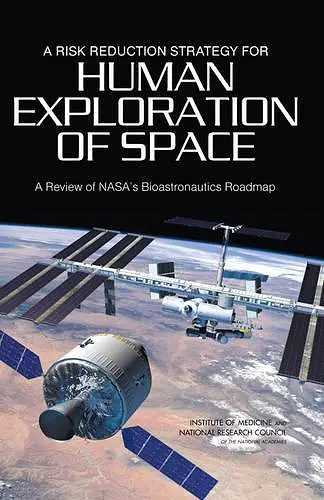A Risk Reduction Strategy for Human Exploration of Space
A Review of NASA's Bioastronautics Roadmap
National Research Council author National Academy of Sciences author Institute of Medicine author Board on Health Sciences Policy author Space Studies Board author Aeronautics and Space Engineering Board author Committee on Review of NASA's Bioastronautics Roadmap author David E Longnecker editor
Format:Paperback
Publisher:National Academies Press
Published:16th Apr '06
Currently unavailable, our supplier has not provided us a restock date

Extending the spatial and temporal boundaries of human space flight is an important goal for the nation and for the National Aeronautics and Space Administration (NASA). However, human space flight remains an endeavor with substantial risks, and these risks must be identified, managed, and mitigated appropriately to achieve the nation's goals in space. The Bioastronautics Roadmap (BR) is the result of extensive, commendable efforts on the part of NASA to prioritize research efforts to meet these challenges. In 2003, NASA asked the Institute of Medicine (IOM), in collaboration with the Division on Engineering and Physical Sciences of the National Academies, to conduct a review of the BR. Specifically, NASA asked the committee to (1) conduct a comprehensive assessment and report of the strengths and weaknesses of the content and processes of the Bioastronautics Roadmap as applied to the missions described in the President's exploration initiative and (2) identify the unique challenges for accomplishing its goals and objectives. In September 2004, the committee released its preliminary report to NASA entitled Preliminary Considerations Regarding NASA's Bioastronautics Critical Path Roadmap. That document presented the committee's preliminary conclusions about the strengths and weaknesses of the April 2004 version of the BR. This report, A Risk Reductions Strategy for Human Exploration of Space, builds on those preliminary conclusions and provides recommendations to NASA about how to address the issues identified by the committee.
ISBN: 9780309099486
Dimensions: unknown
Weight: unknown
162 pages